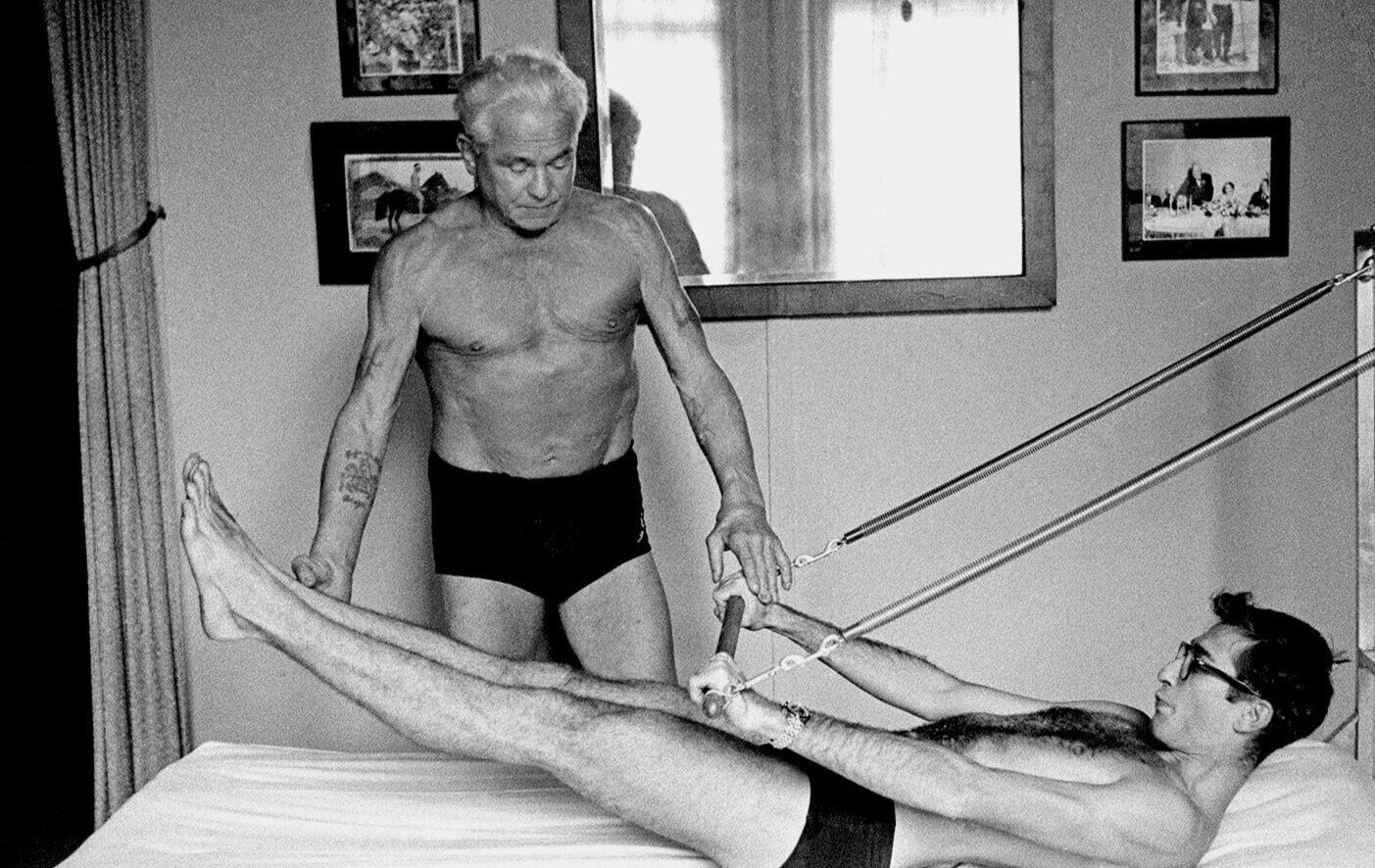
Joseph Humbertus Pilates
Pilates is a mind-body exercise technique developed in the early 20th century by the German Joseph Pilates as a way of overcoming physical limitation within his own body. Pilates called his method Contrologie, because he believed his method uses the mind to control the muscles. The technique focuses on the core postural muscles which help keep the body balanced and which are essential to providing support for the spine.
Pilates created “The 10 Pilates principles” to condition the entire body :
Breathing
He believed in circulating the blood so that it could awaken all the cells in the body and get rid of the wastes related to fatigue.
Full and thorough inhalation and exhalation are an essential part of each exercise
and should be properly coordinated with movement.
Centering
He called the abdomen, lower back, hips and buttocks- the “Powerhouse”, which we now call the “Core”.
All energy for Pilates exercises is said to begin from
the powerhouse and flow outward to the limbs.
Concentration
Pilates demands intense focus. You can’t think about anything else except your body.
Control
Pilates movements are all performed slowly and deliberately without any sloppy,
jerky movements. We decide how we use our bodies!
Awareness
Knowing what each part of our body is doing at any given moment is a vital part of exercising.
Whilst working one particular muscle, we are aware of the position and actions of the rest of the body.
Precision
Every instruction is considered vitally important to the success of the whole. The focus is on doing
one precise and perfect movement, rather than
many halfhearted ones.
Flow
Appropriate transitions between exercises are expected to be kept continuous.
The exercises are intended to be completed through a gentle flow, grace, ease and fluidity.
Efficiency
Movement’s efficiency involves saving energy in execution.
The segments and muscle groups involved in motion just spend the necessary amount of energy,
no more no less, while the rest of the body remains stable.
Balance
Regaining balance and improving quality of life and performance is one of the main principles of
the Pilates Method.
Harmony
The central aim of Pilates is to create a fusion of mind and body, so that without thinking about it the body will move with economy, grace and balance, making the most of it s strengths, counteracting it s weaknesses and correcting it’s imbalances. Harmony can be gained between mind and body; and between the person and his environment.
It is these principles that make Pilates a mind-body form of conditioning rather than only a physical process.
It’s about working smarter, not harder!
Pilates claims that his system is not merely a collection of exercises, but a method developed and refined over more than eighty years of use and observation. The technique continues to evolve, incorporating the latest research findings from medicine and exercise science.
Who can do Pilates?
Pilates is for everyone!
From teenagers to seniors, from post-surgery and rehabilitation to professional athletes and dancers. Exercises can be modified to match the requirements of every individual. Classes will focus on specific areas whilst using exercises that integrate the whole body to re-educate and restore optimal function.
What is the optimum number of Pilates classes?
You will achieve optimum results with 2 classes per week (or more).
Once a week is not ineffective, but your progress will be slower.
What to bring?
Please wear comfortable exercise clothes and clean socks. Please also bring any relevant medical notes.


